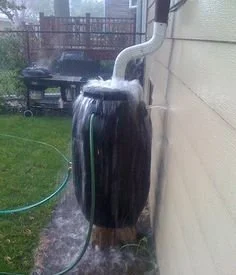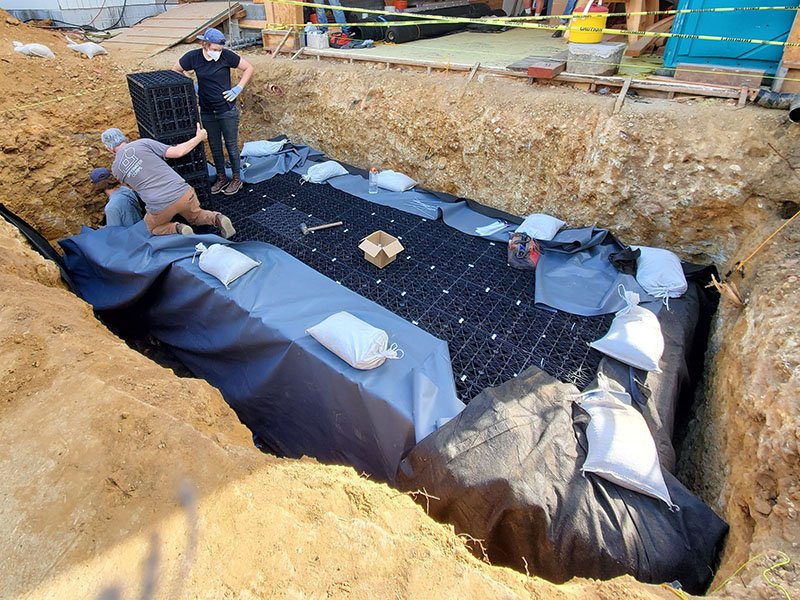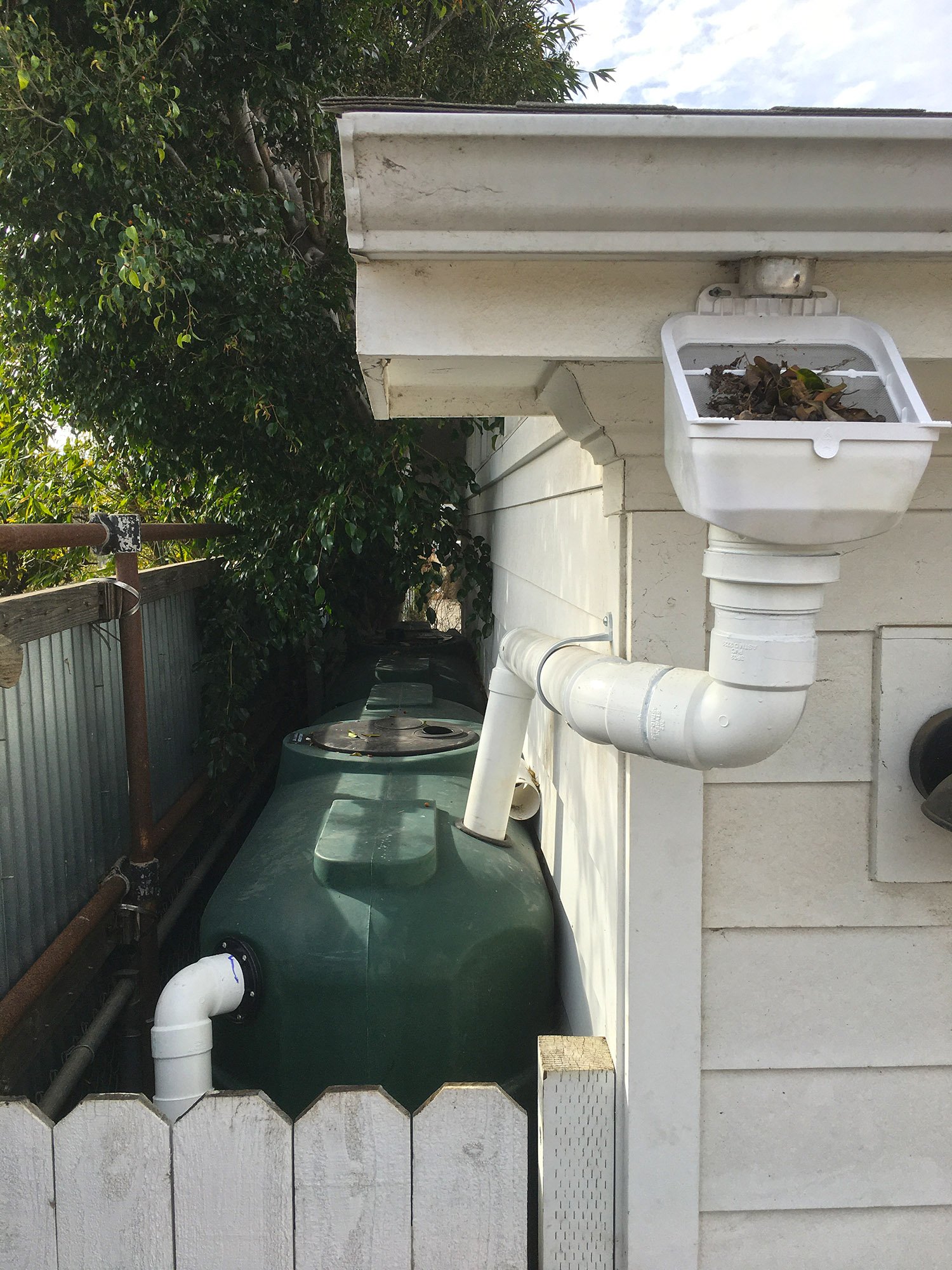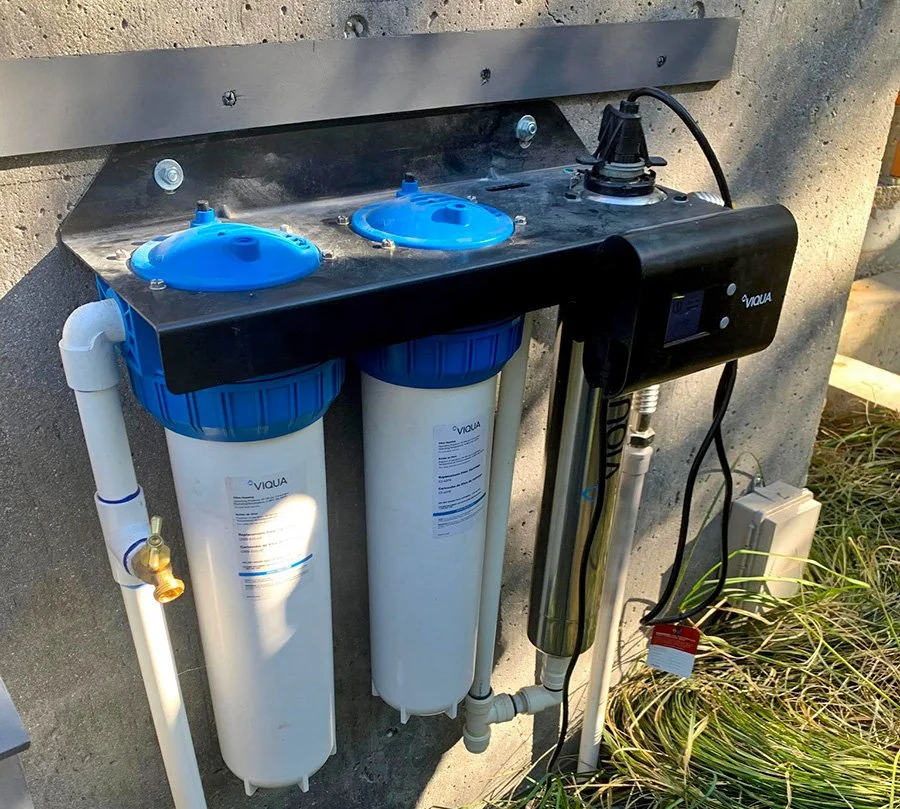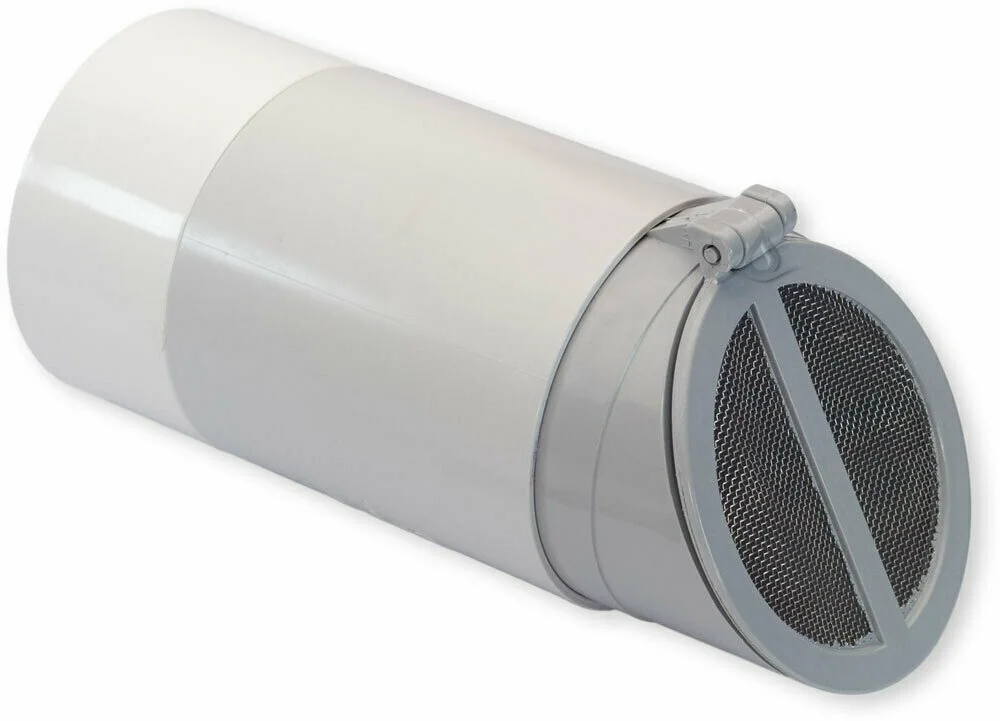Rainwater Harvesting Tanks
Rainwater harvesting can take many forms - all beneficial in their own way. We specialize in installing tanks and cisterns that collect rainwater for residential irrigation. In this article, we will go over different types of tanks, as well as ancillary components such as screens, pumps and filters.
Barrels
Rain barrels usually hold 50 gallons each and can often be acquired cheaply through rebate programs (Santa Monica offers up to $2000!). Their usefulness is limited due to their small capacity - while they can help with localized flooding during rain events, they will not hold enough water to be a significant source of irrigation. Theoretically, a large number of them can be interconnected to store more water, but in practice it is difficult to use all of the water from the different barrels - and you need A LOT of them laying around. For these reasons, we do not generally recommend or install rain barrels.
Polyethylene Tanks
Polyethylene plastic tanks offer sufficient capacity to make an impact on your garden, and they are more affordable than their steel and underground counterparts. They range in size from 100 to 5000+ gallons. These tanks do not require assembly and can do everything the higher end tanks can do.
Galvanized Steel Tanks
Today’s galvanized steel tanks consist of a steel outer shell with a polyethylene liner that holds the water inside. They need to be assembled on site, and offer a more aesthetically pleasing alternative to plastic tanks. Once installed they will last a lifetime, offering sustainable irrigation and a beautiful rustic accent to a native landscape. They range in size from 1500 to 10,000+ gallons.
Underground Cisterns
The crown jewel of rainwater harvesting, underground cisterns offer unmatched storage capacity along with the ability to collect runoff from the ground as well as roofs - all while being completely hidden. These are often constructed with fiberglass and range in size from 500 to 10,000+ gallons.
Modular Cisterns
An alternative to traditional underground cisterns, modular cisterns are built using stackable modules wrapped in a polyethylene lining. Their flexible assembly process allows them to fit in tight and irregular spaces without sacrificing storage capacity. Size is dictated by the number of modules used and is within the ballpark of traditional cisterns.
Pumps
In their simplest form, rainwater systems rely on gravity to feed water through a hose bib. For the water to be pressurized, a pump must be installed inside the tank. This allows the rainwater to be filtered and used just like municipal water, either through a hose or drip line.
Alternately, there are small in-line pumps on the market that can be attached to the exterior hose bib and used to move the water out to the garden. While they cannot offer the same capabilities as in-tank pumps, they do offer an intermediate solution for getting water out of the tank.
Pre-Filtration
Pre-filtration is key, and as simple as a screen to clear out major debris before it enters the tank. Some tanks have them built-in. We are fans of “leaf eater” screens mounted below downspouts for their effectiveness and ease of maintenance. Their slanted design makes them hard to clog and easy to access.
Post-Treatment
In order to use rainwater with traditional irrigation systems such as drip, it must be filtered and disinfected first. Post-treatment equipment for rainwater has a small footprint, relatively low cost, and can even achieve potable standards for emergency use.
Mosquito Prevention
A common concern with rainwater storage is mosquitos breeding in the tanks. In order to prevent this, tanks must be screened at all inlets and outlets, including vents and overflows. We are well-versed in making sure tanks are 100% screened. If done correctly, mosquitos are unable to enter the tank to lay their eggs.

